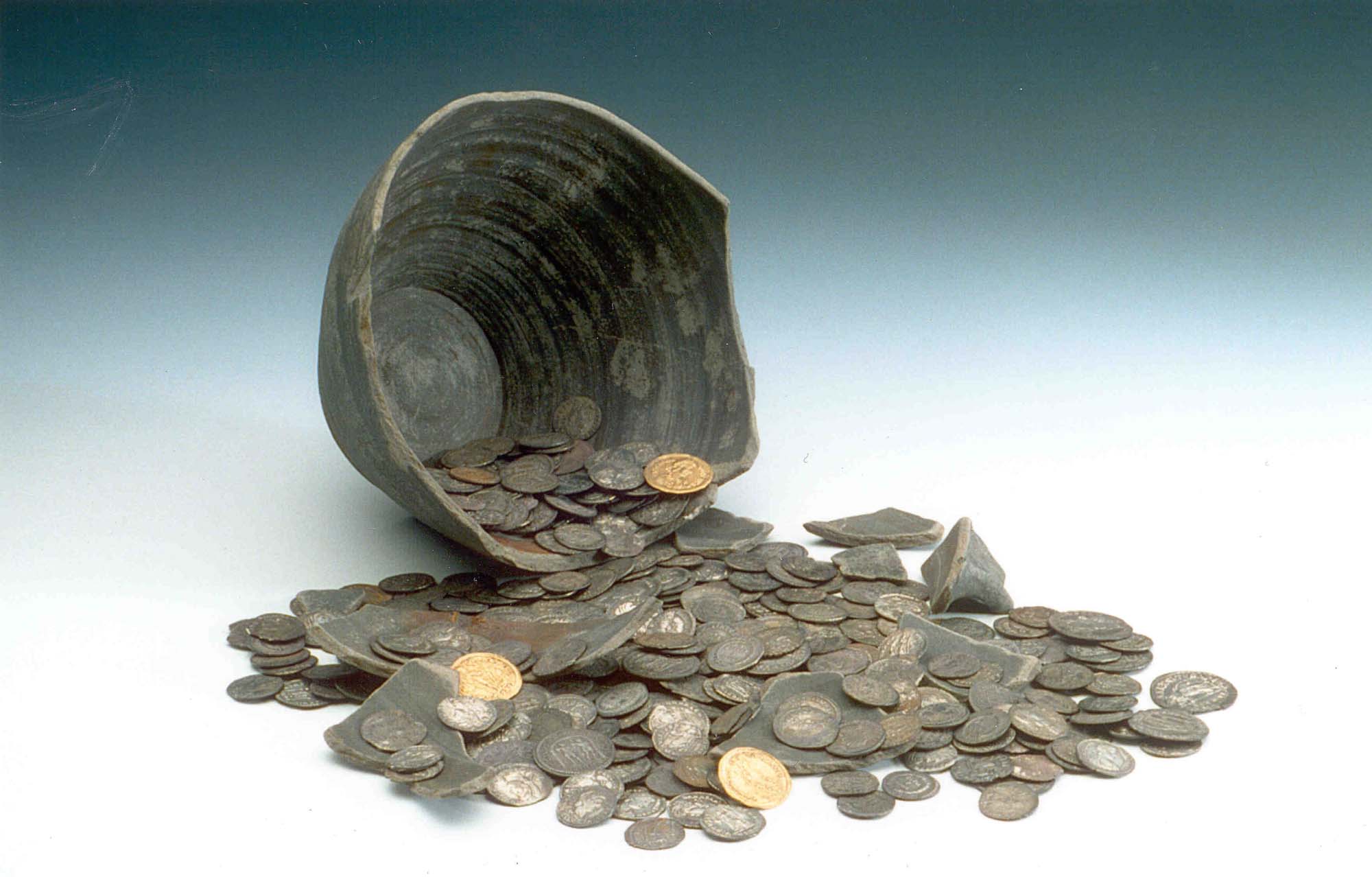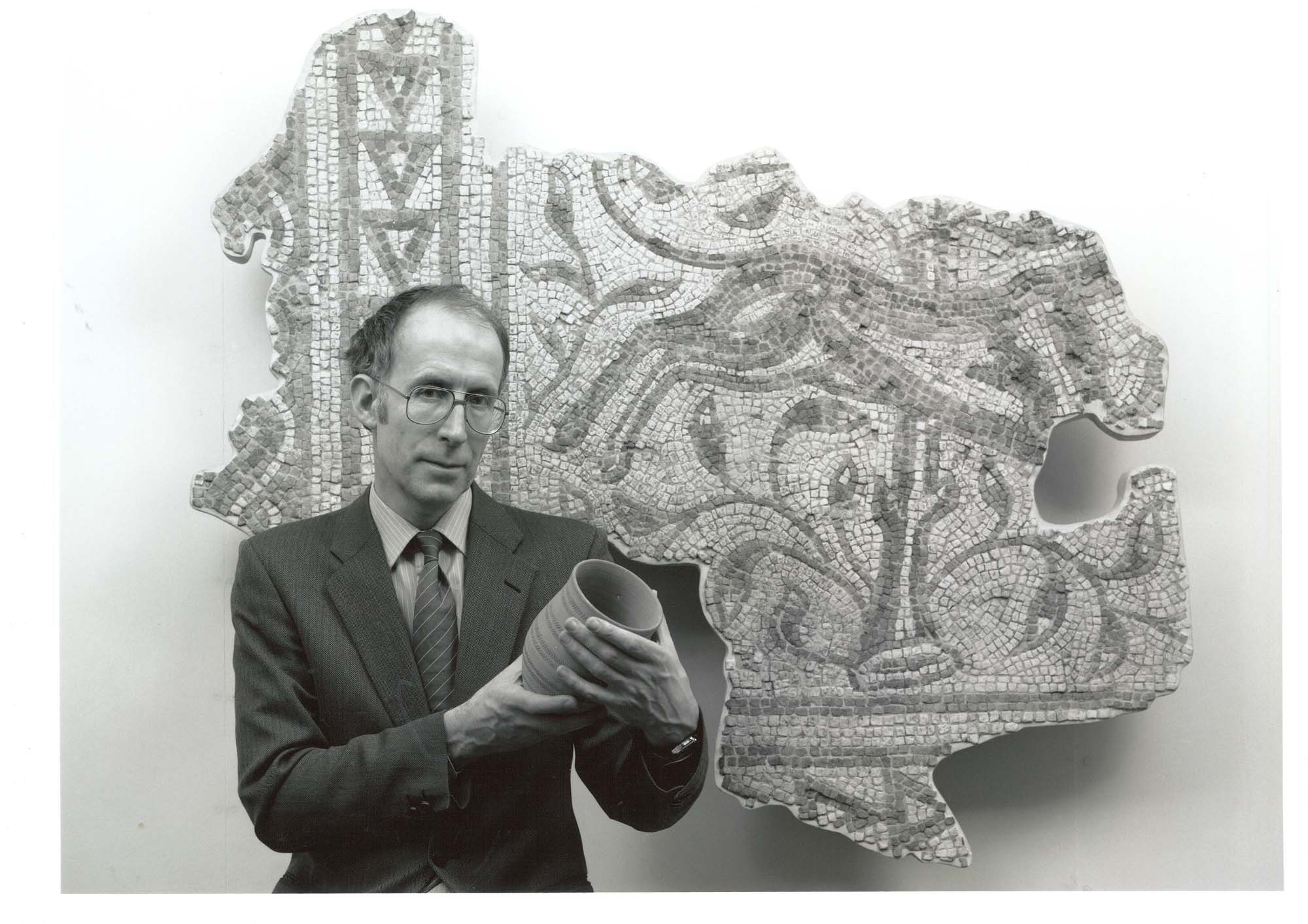DepthReading
The Roman coin hoard found in ‘Bronze Age Wiltshire’
The Stanchester Hoard of Roman coins. Courtesy Wiltshire Museum
As Wiltshire Museum prepares to reveal treasures ranging from paintings of Stonehenge to 19th century Druid medals acquired with Art Fund support, Curator Lisa Brown highlights a Roman coin hoard that offers clues to the often forgotten history of a county famed for its pre-historic heritage
This hoard of Roman coins was discovered in 2000 by a 14-year-old schoolboy and his father from Marlborough. It comprises 1,196 coins in total – 1,192 of them are silver, one is bronze and three are gold.
It’s called the Stanchester Hoard because it was found close to the site of the Stanchester Roman Villa in Wilcot, which is in the Vale of Pewsey.
The size and scope of the villa aren’t really that well known because there have only been two small-scale investigations at the site – in 1931 and 1969 – but these revealed traces of a major building, with chalk footings, stone roof tiles and a hypocaust system. But because there hasn’t been any recent work done on the site it remains a bit of an enigma.
There have however been some recent finds at the villa including two small Roman bronze figurines of Venus, so I think we’re talking about a high status Roman building.
My former boss, the late Dr Paul Robinson, who the exhibition is dedicated to, was a numismatist and he thought the importance of the hoard certainly lay in its close association with the Roman villa.
I think the hoard was deliberately concealed. The latest coins in it were imported into Britain after AD 406, making it the latest dated Roman coin hoard ever found in Wiltshire and one of the latest known hoards to have been deposited in Southern England .
It may even have been concealed after Britain ceased to be part of the Roman Empire – Roman rule ended in Britain around AD 410 – so these were very turbulent times for the Romano-British inhabitants of Wiltshire and the villa at Stanchester.
The coins are also unclipped, which is unusual because it was common practice in Britain in the late Roman period to clip silver coins. The precious metal could then be melted down or used to make counterfeit coins. Interestingly some of the coins are irregular copies and counterfeits.
There are three gold solidi from the Emperor of Honorius, which date between AD 393 to 423, and whole the hoard spans 13 emperors; the earliest being Constans who reigned from AD 337 to 350
They were all concealed inside a greyware pot, which was manufactured at a kiln factorySurrey and we have had that pot reconstructed, because it was in pieces, for the exhibition. It is the first time the reconstructed pot and coins have been put on display since their discovery.
In the exhibition I’ve also selected a coin for each emperor – some of these emperors died of natural causes and others were ‘bumped off’ which is what you can expect from this kind of time period. Emperor Constans died aged 27 years, after being assassinated on the orders of the usurper Magnentius.
“There is so much more to be discovered about Roman Wiltshire.”
Although we are famed for our Bronze Age Heritage, there are lots of Roman sites in Wiltshire.
Two of the most famous are the Roman town of Cunetio near the village of Mildenhall, which was excavated in the 1950s and 1960s after aerial photographs were taken in 1940, and the Roman settlement and villa site of Verlucio.
We have the excavation archives from both sites at the museum and we’re going to be working with Historic England on the Verlucio Environs Project later this year. Roman archaeology is part of the story of many of the prehistoric sites of Wiltshire. Quite a lot of the time you see evidence of Roman activity because the Romans also thought of these sites as being important.
So when excavations with a prehistoric focus are going on, like the recent one in the Vale of Pewsey (at Marden Henge) by Reading University, you also have Roman specialists on site because material come up that needs to be looked at and not ignored just because it isn’t prehistory. There is so much more to be discovered about Roman Wiltshire.
It is particularly wonderful to show this Roman hoard in an exhibition dedicated to Paul, because all of the objects on display – the artworks, the other coins, the medieval floor tiles, the Druid medals – were fundraised and acquired by him. Paul came to the museum in 1974, retired in 2008 and sadly died in 2017. He was a major figure who was at the heart of Wiltshire archaeology and history for more than 30 years.
Lisa Brown was speaking to Richard Moss.
The Stanchester Hoard, which was acquired with grant support from Art Fund, V&A Purchase Grant Fund, Primrose Trust and private donations, goes on display as part of, ‘Telling Wiltshire’s Story: 30 Years of Support from Art Fund’, running from May 12 – June 24 2018.
Category: English
DepthReading
Key words:


